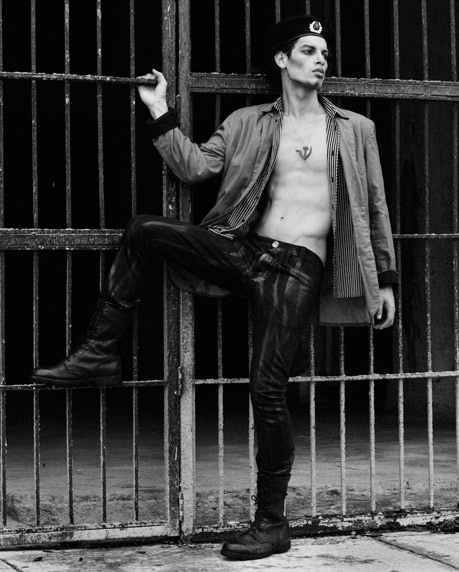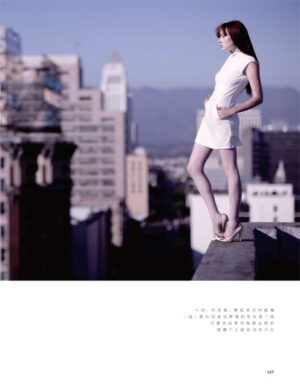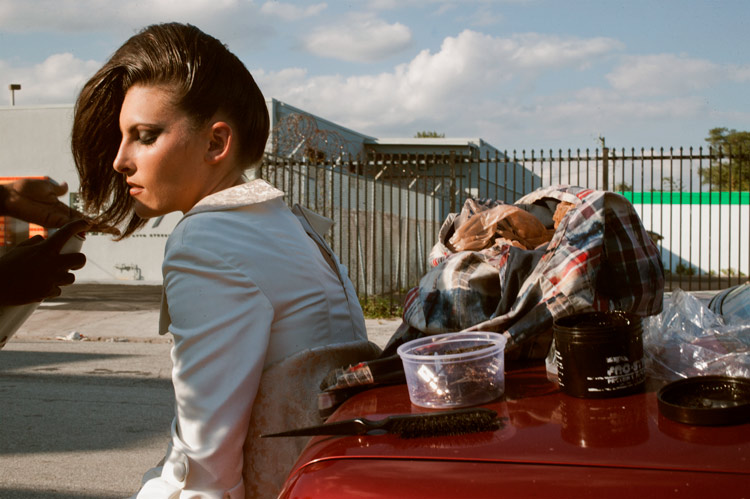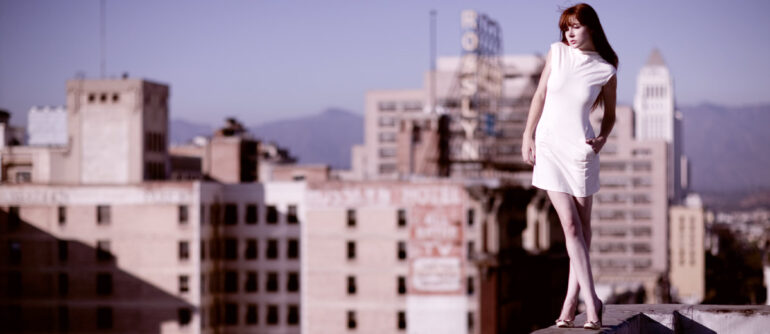We may earn a commission when you purchase through affiliate links. Learn more.
When shooting photography on-location out of a studio, location scouting is an important part of the workflow and depending upon the scale of the photo shoot, location scouting often begins long in advance to make sure that I’m fully prepared. Each location comes with its own unique challenges that I like to be ready for.
Because location is a critical part of a great photo, it’s important not to leave location scouting as an afterthought. My fashion editorial photography preparations typically begin with a storyboard and a mood board, where I attempt to conceptualize the photoshoot.
The Location Scouting Process
When given a good measure of creative control, my location scouting process often begins with a visit to Google Maps and Flickr, 500px, and Instagram. Nearly everyone uses Google Maps and as photographer, you’re probably already familiar with these image sharing websites and with millions (billions?) of uploaded photos, the chances of an interesting location having already been photographed are very good and many photographers include the location information along with their images, some with relevant tags like #DowntownPortland and others with actual geotagged GPS coordinates. Even in areas that you think you know well, you might be surprised to find some hidden locations that you’ve never seen.
Photo sharing websites can be a great starting point to get some ideas of the locations that are available in your area, but you’ll find that some photographers don’t tag their photos with the location. Don’t be afraid to send the photographer a message if you’re curious about where a photo was taken — some people are very secretive about locations, while others are happy to share. To help in your search, Google Maps is a great way to explore an area from above and then virtually drive around using Street View.
As useful as Maps is, some locations can change or disappear entirely in a matter of weeks as forests are cleared, hills leveled, and old buildings knocked down and new ones put up. Getting off the computer and into the car to scout for locations is almost always a must. If you see an interesting location while you’re out driving, even if it isn’t right for the photoshoot you are planning, stop and take a few photos of it and note its location — it might end up being perfect for another shoot at some point.
While driving through the Florida Everglades, I came across a stretch of road that passed through a burnt forest of melaleuca trees. The melaleuca tree is an invasive species in Florida, originally introduced to drain the water from the Everglades to make way for development, before people realized what a bad idea this was. Capable of soaking up as much as 100 gallons of water a day, these trees are destructive to the native ecosystem and are sometimes burnt in controlled fires to keep them from spreading. The muddy ground was covered with white ashes from the fire and the scene had an otherworldly look. With some creative lighting, I knew that this could be a great location for some fashion photography. I explored the area and took some test photos, before returning a week later for a photoshoot. Thanks to my scouting trip, I knew how muddy the area was and that we’d need to bring something solid like a small board for the model to stand on to avoid sinking into the muck. To protect my lightstands, I brought plenty of plastic bags to place over the legs to keep them dry.
If I hadn’t explored this location in advance, I wouldn’t have known how muddy it was and the photoshoot could have ended rather disastrously.
What Makes a Good Location?
 When I’m location scouting, I’m searching for not only a place that looks interesting, but for one that will match the mood and aesthetic of the shoot I have planned. I find that many newcomers to photography will find a location that is very interesting, but often doesn’t match the type of photoshoot they’re doing, which is why creating a story and mood board can be so helpful.
When I’m location scouting, I’m searching for not only a place that looks interesting, but for one that will match the mood and aesthetic of the shoot I have planned. I find that many newcomers to photography will find a location that is very interesting, but often doesn’t match the type of photoshoot they’re doing, which is why creating a story and mood board can be so helpful.
To give some examples, for a men’s fashion editorial photoshoot for Futureclaw, an oversized 12×15 inch fashion and art magazine, we were going for a dark, post-apocalyptic mood. Titled Children of the Revolution, this editorial called for a location that was run-down and deserted, with elements of urban decay and dark shadows. While location scouting, I found the perfect location in an old warehouse district that was exactly what I was looking for.
When shooting fashion photography, it’s important to choose a location that is interesting and compliments your subject, rather than distracts from it. I liked this location because it had exactly what I was looking for — old, rundown industrial buildings and streets with very little traffic. The vertical lines of the bars compliment the vertical lines on the jeans and the shadowy area behind the model adds an element of mystery and depth to the photo. I like locations that offer some variety nearby, so it’s good to be able to mix it up a little with some different locations to avoid overusing a spot. In this particular location, there were several interesting spots within just a block or two — perfect!
 At the other end of the spectrum, locations that are simply TOO spectacular can also distract from your models. I love shooting in nature, but vast, breathtaking landscapes can sometimes steal too much of the attention. In situations like these, where I love the location but don’t want it to distract from the subject, I will often use a shallow depth of field to diffuse the sharp detail of the background and help the models stand out.
At the other end of the spectrum, locations that are simply TOO spectacular can also distract from your models. I love shooting in nature, but vast, breathtaking landscapes can sometimes steal too much of the attention. In situations like these, where I love the location but don’t want it to distract from the subject, I will often use a shallow depth of field to diffuse the sharp detail of the background and help the models stand out.
In this fashion editorial to the right shot for Life Element magazine in China, but photographed on-location in Los Angeles we chose a location on top of a tall building in the downtown area. Using a shallow depth of field — in this case by using the Canon 85mm f/1.2 L lens wide open — I was able to include the very interesting skyline of Los Angeles without having it distract from the models.
Safety and Permission
Safety is a huge concern on any photo shoot. The last thing you want is an injured model or member of your crew, so it’s important to choose locations that not only look interesting, but that are safe as well. Locations in high crime areas might be visually intriguing, but the risk involved with shooting there is often not worthwhile, especially if it’s just you and a model without a large crew around you.
Avoid locations like active train tracks, crumbling and condemned buildings, and collapsing staircases and use caution and common sense in areas where dangerous wildlife like venomous snakes, spiders, alligators, and feral dogs might be present. Nothing will end a photoshoot quicker than an injury, to yourself, a model, or a member of your team. Visiting the location in person is important to find out what the actual conditions are — things like deep mud might not be obvious in a Street View photo, but it can create major problems when you arrive on the day of the shoot if you haven’t planned for it.
While there are many locations where obtaining permission is not required, there are others where obtaining appropriate permits and permission is a necessity, especially if your production is a large, obvious one with a big lighting setup and crew that will disrupt business or block traffic. Research your local laws and ordinances — obtaining a permit is often a simple process. In many areas, you may be required to have insurance coverage to obtain a permit to shoot. Photography insurance is relatively inexpensive, but provides protection to both you and property owners should problems ever arise.
When the location you’ve scouted is located on private property, I find that it’s advisable to ask for permission to shoot there. I’ve frequently been surprised by just how accommodating people will be when you ask for permission to shoot on their property. In some situations, especially when shooting an advertisement or other commercial project, you may also need to obtain a property release from the owner.
With TV shows like America’s Next Top Model, Project Runway, and others popularizing modeling and fashion photography, people are often very excited at the prospect of getting to see a real photo shoot in person. Be friendly and courteous and let the property owner know what you intend to photograph and where you’d like to do it, to avoid any problems on the day of the shoot. It’s much easier to find another location if they decline permission in advance than on the day of the shoot when they find out you’re shooting something other than what you told them or the production is much larger than you lead them to believe.

Plan Thoroughly
I like my photoshoots to go according to plan without too many surprises. It saves time and energy to have everything figured out well in advance and the location plays a big part in the planning process. Pay attention to the ground and lighting conditions — will your location be in full sun or in shadow during the time of day you’ll be shooting? Take test photos in advance to figure out what kind of lighting setup you’ll need. The less you have to figure out on the spot the day of your photo shoot, the less stressful it will be.
When scouting a location, think about more than just the nice photos you could take there. What’s the parking situation like? How private is it? Is it in a safe area? Where will the models change? What will you do if it rains? Spontaneity is great and you can never plan for everything, but having a general outline of how you’ll work in your chosen location will help you to produce a successful photoshoot. Be sure to do some research as well to make sure that there are no events, parades, road closures, etc. scheduled for the day of your planned photoshoot. Good luck & have fun!


